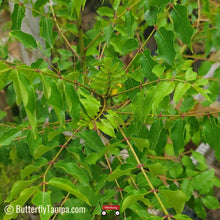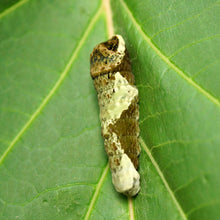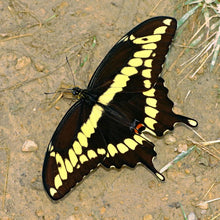Hercules’ Club (Zanthoxylum clava-hercules) is a long-lived deciduous tree whose native range extends from the coastal plains of southern Virginia south through much of Florida and west to Texas. Although the tree can grow to 50’ tall by 25’ wide, it more commonly grows to a height of 25-30’. The tree grows best in full sun of 6 hours or more and prefers well-drained loamy or sandy soil. It is drought tolerant once established.
The bark of Hercules’ Club is especially interesting: its coloration is a blotchy mixture of dark and lighter gray with corky wart-liked features tipped with thorns. (Sugarberries and hackberries (Celtis spp.) have similar corky wart-like features, but lack the thorns.)
Hercules’ Club is host to Giant Swallowtail caterpillars and its dense clusters of small white flowers attract butterflies, moths and bees in the spring. Birds and small mammals eat the fruit and enjoy its seeds.
In other parts of the country, Hercules Club is called Toothache Tree: Native Americans and early American settlers chewed its leaves and chewed or smoked the tree’s bark to relieve pain from toothaches and rheumatism. (You can read more about the traditional medicinal uses of this tree here.)
The botanical name for Hercules’ Club both derive from the Greek words xanthos (yellow) and xylon (wood); boiling the roots of many Zanthoxylum species produces a yellow dye.
- Long-lived perennial tree, thorny
- Height: 10 –25 (50) ft. Width: 10 – 25 ft.
- Flower color: White, showy
- Fruit color: Yellow
- Exposure: Full sun to partial shade
- Moisture level: Moist to dry
- Soil type: Clay, loam, sand
- Propagation: Seed
- Birds and other wildlife like the fruit
- Larval host plant for Giant Swallowtail
/djs






